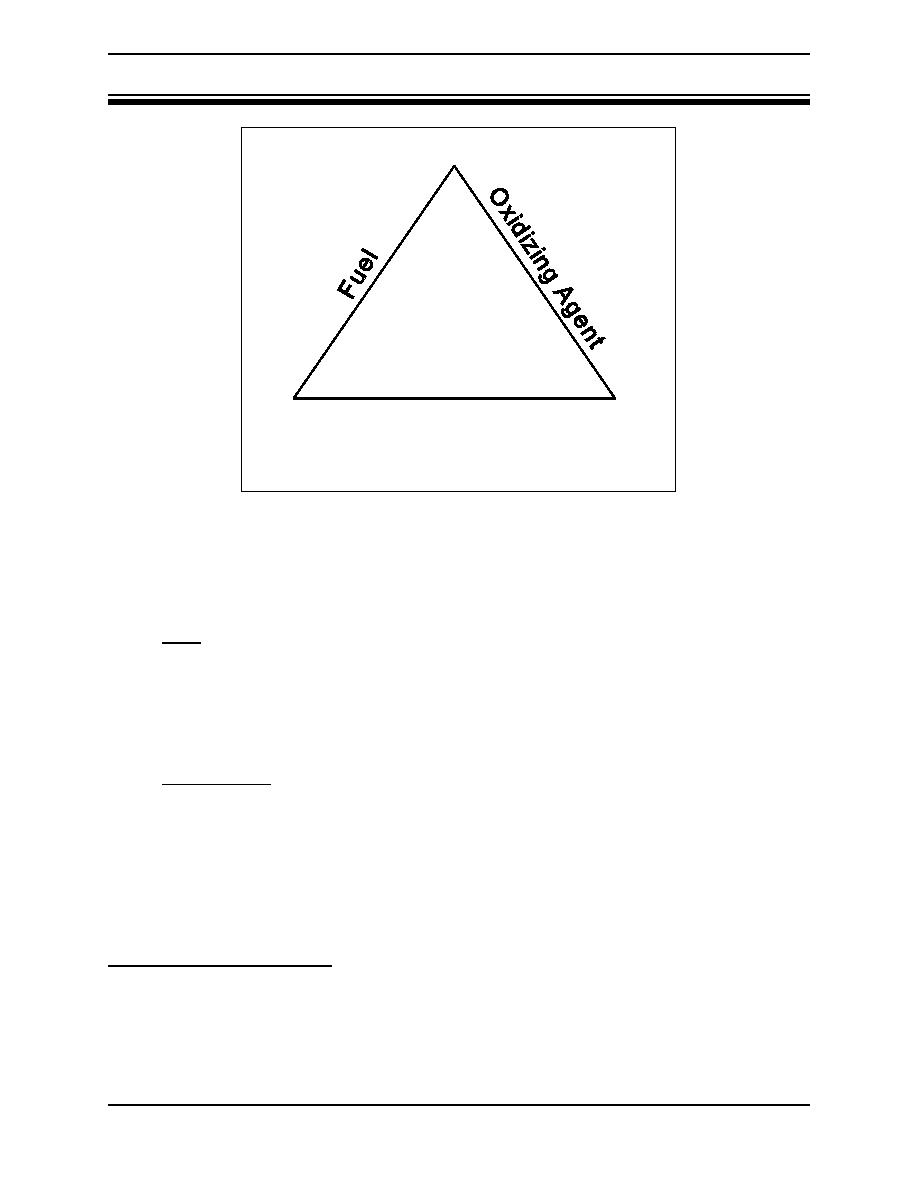 |
|||
|
|
|||
|
|
|||
| ||||||||||
|
|  PRINCIPLES OF COMBUSTION
DOE-HDBK-1081-94
Spontaneous Heating and Pyrophoricity
Combustion
Heat Source
Figure 1. Fire triangle.
relative hazards and classifications of oxidizing agents may be found in Appendix B
and in NFPA 43A, Code for the Storage of Liquid and Solid Oxidizing Materials.
Fuel
A fuel is the substance that reacts with the oxidizing agent during combustion. Fuels
can be solids, liquids, gases, and even metals. Familiar fuels are coal, firewood, and
gasoline. For the purpose of this document, the discussion of fuels will be limited to
those that are known to combust spontaneously.
Heat Source
Normally, a heat source such as a flame of spark is required to ignite a mixture of a
fuel and oxidizing agent. That is, heat must be added or the fuel and oxidizing agent
will not react. The reactions that are the subject of this document are special
instances where no heat source is required to ignite the fuel. These fuels react so
readily with oxygen that a heat source is not required for ignition. Ignition for these
fuels occurs as a result of spontaneous heating or pyrophoricity.
Spontaneous Combustion
of heat from oxidation reactions. Fires started by spontaneous combustion are caused by the
following mechanisms:
Pyrophoricity
Page 4
Rev. 0
|
|
Privacy Statement - Press Release - Copyright Information. - Contact Us |